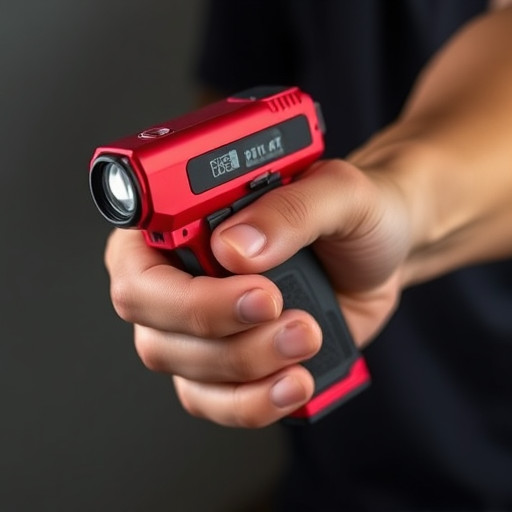When choosing between a self-defense stun gun and pepper spray, consider your comfort level with using force, personal needs, and potential threat level. Stun guns deliver electric shocks to temporarily paralyze attackers, while pepper spray irritates eyes and respiratory systems, causing disorientation. Stun guns offer non-lethal escape or help calling options; pepper spray is an affordable, easily accessible option for quick incapacitation.
“In today’s uncertain world, understanding your self-defense options is paramount. This article provides a comprehensive guide to two popular tools: the self-defense stun gun and pepper spray. We’ll explore their definitions, mechanisms, pros, cons, and suitability in various scenarios. Additionally, we delve into legal considerations and safety precautions related to these devices. Whether you’re a seasoned expert or considering your first self-defense tool, this guide offers insights to help make an informed decision.”
Understanding Self-Defense Options
When considering options for self-defense, understanding the differences between a stun gun and pepper spray is key. Both serve as crucial tools to deter potential attackers, but they operate in distinct ways. A self-defense stun gun delivers an electric current that temporarily disables an assailant by disrupting muscle control, allowing the user to escape safely. It’s a powerful option for those seeking a more aggressive form of protection.
On the other hand, pepper spray (also known as oleoresin capsicum or OC spray) irritates the eyes and respiratory system, causing the target to become disoriented and temporarily incapacitated. This non-lethal option is ideal for situations where you want to disable an attacker without causing serious harm. The choice between a stun gun and pepper spray ultimately depends on your specific needs, level of comfort with using force, and the potential threat level you’re facing.
– Definition of a stun gun and pepper spray
Self-defense stun guns and pepper spray are two common tools people consider for personal safety. A stun gun, also known as an electronic control device (ECD), is a handheld weapon that delivers an electric shock to temporarily incapacitate an attacker. It works by disrupting muscle control through high-voltage, low-current electrical pulses, rendering the target immobile for a brief period. Stun guns are popular due to their non-lethal nature and ease of use.
Pepper spray, on the other hand, is a type of aerosol that contains capsaicin, the active ingredient in chili peppers. When sprayed into someone’s eyes and face, it causes temporary blindness, coughing, and pain, allowing the user to escape or disable their assailant. While pepper spray is also non-lethal, its effects are more localized and immediate. It’s a popular choice for those seeking a quick and potent way to defend against attackers.
– Their primary functions and mechanisms
Self-defense stun guns and pepper spray are two common tools used for personal safety, each with its unique mechanism to deter potential attackers. A self-defense stun gun, also known as an electronic control device (ECD), works by delivering a powerful electric shock that temporarily paralyzes the target, rendering them incapacitate for several minutes. This shock is produced by two metal probes that make contact with the attacker’s body, disrupting muscle control and causing pain. The primary function of a stun gun is to provide a non-lethal means of self-defense, allowing users to escape or gain time to call for help.
On the other hand, pepper spray, or oleoresin capsicum (OC) spray, uses capsaicin, the active ingredient in chili peppers, to cause temporary blindness, coughing, and difficulty breathing in the target. When activated, the spray releases a cloud of OC that irritates the eyes, nose, throat, and skin, making it difficult for the attacker to see, breathe, or move effectively. Unlike stun guns, pepper spray is designed to disable temporarily without causing serious harm or long-term damage. It is often seen as a more affordable and easily accessible option for personal protection, suitable for various situations where quick disorientation of an assailant is crucial.
